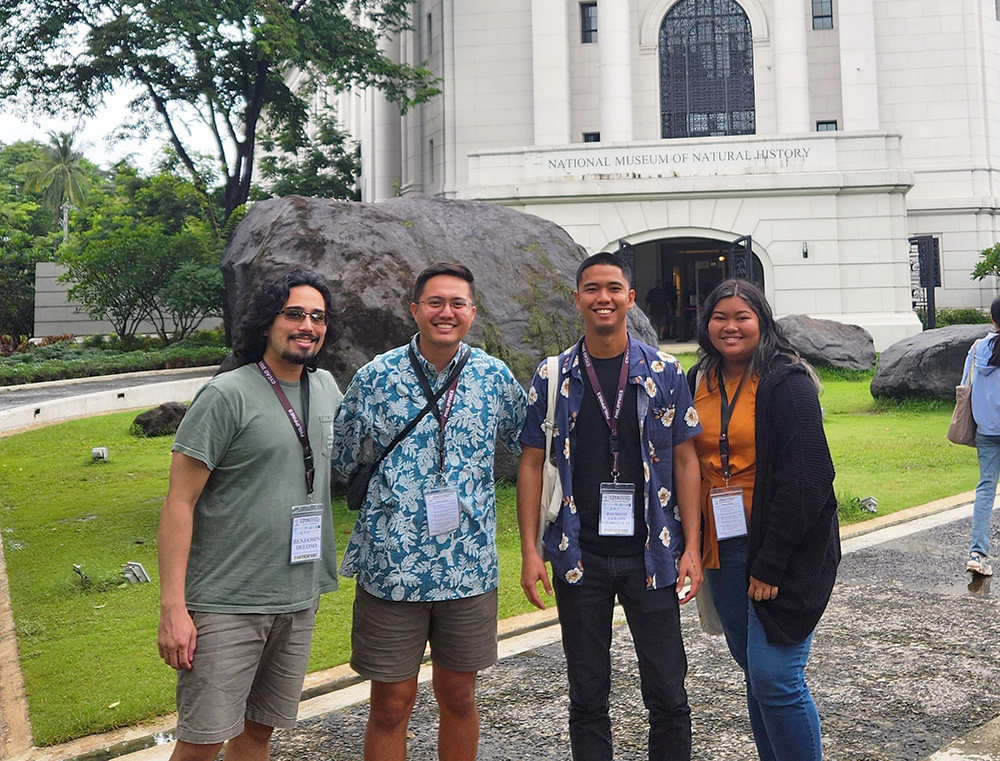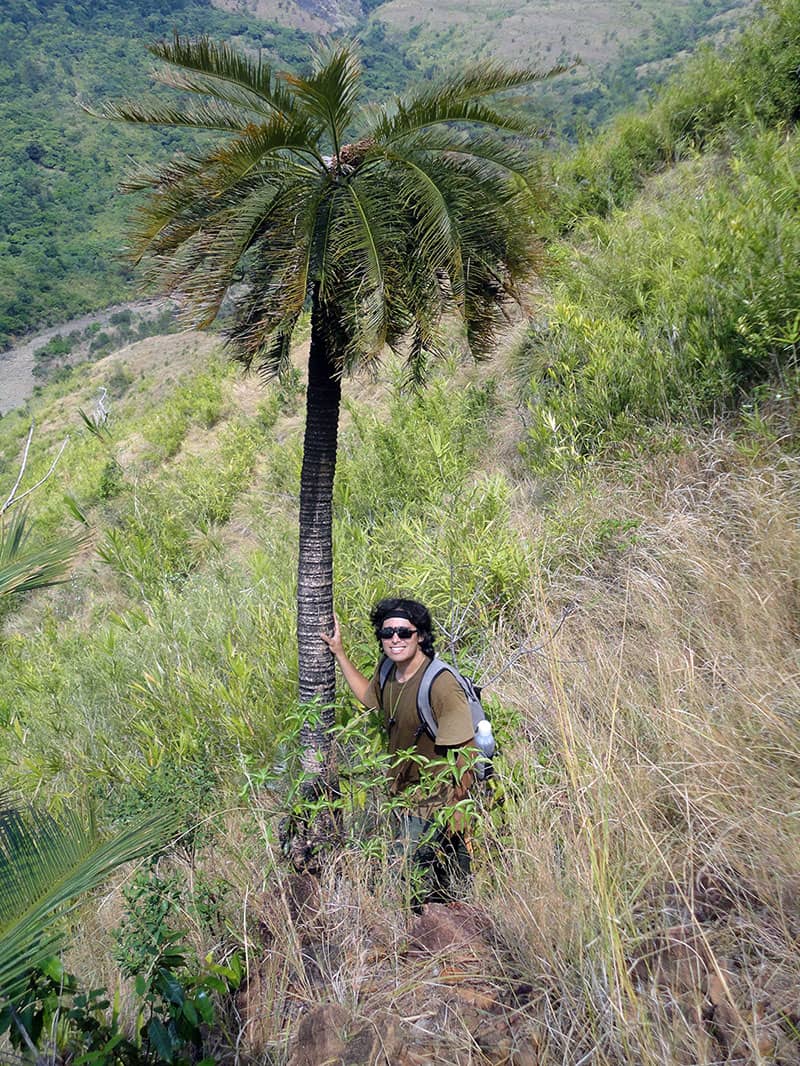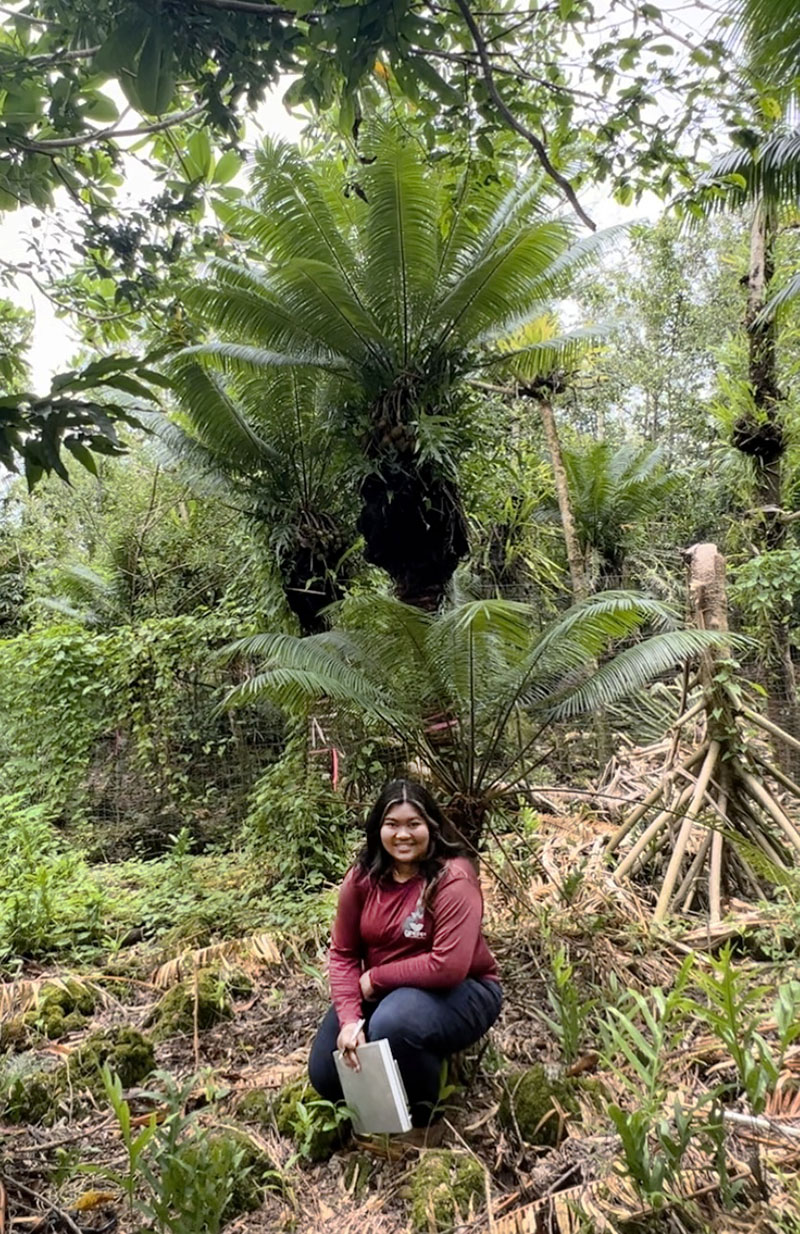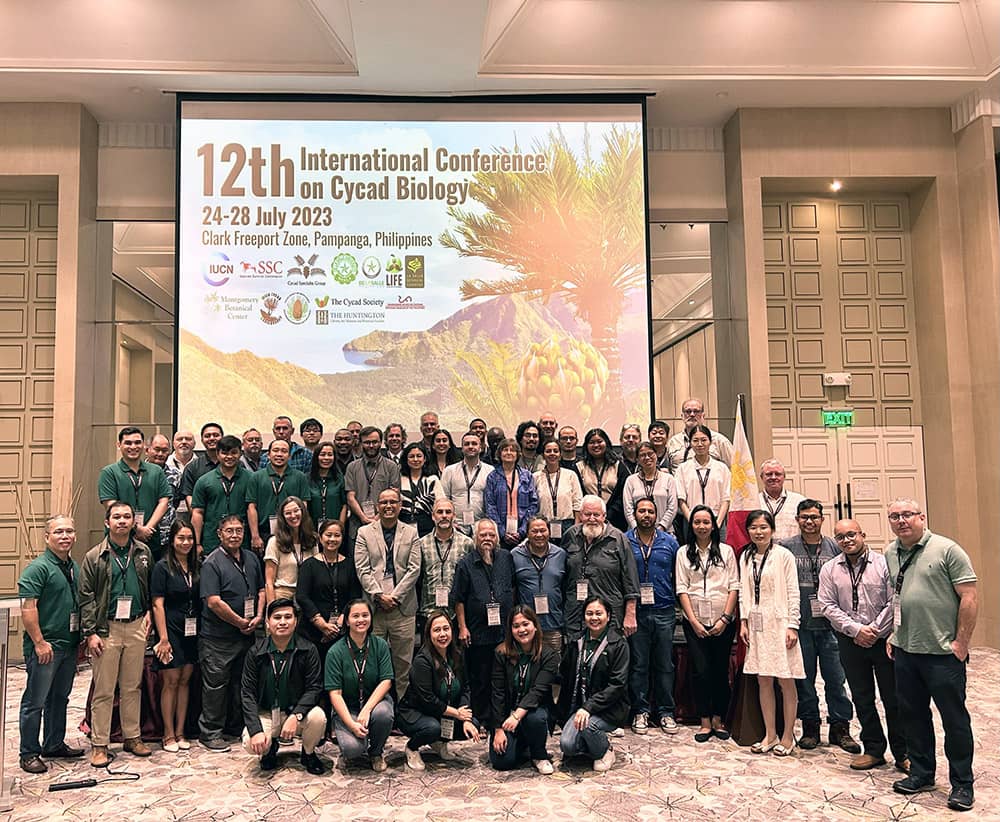Micronesia's endangered cycad inspires UOG alumni toward careers in its conservation
Micronesia's endangered cycad inspires UOG alumni toward careers in its conservation
Micronesia's endangered cycad inspires UOG alumni toward careers in its conservation
10/30/2023


Four University of Guam alumni from recent years have found a common and critical purpose in their lines of work after graduation: the conservation of Guam’s once-most-common but now endangered plant — Cycas micronesica, known in CHamoru as fadang.
As biology, agriculture, and environmental science students at UOG’s College of Natural & Applied Sciences, they learned how unique the plant was — being endemic to Micronesia with ancient lineage in the region dating back 9,000 years. Yet, just over the lifespans of these young scientists, the fadang's population has declined by 90% due, in large part, to the arrival of an invasive insect to Guam. And now, they’re committed, both personally and professionally, to the endangered plant's cause.
“Fadang was the first native species that caught my attention and got me hooked on native flora in the Marianas,” said environmental science alum Charles “CJ” Paulino. “I was proud to know that we had our very own endemic species and was eager to learn as much as I could about it.”
Conservation through research, mitigation, and education
Paulino is now working in the conservation of native Guam species as the lead biologist of the Tåno, Tasi, yan Todu nonprofit organization. Leading up to that, he assisted cycad researchers in the Marianas with collecting samples from the field. One of their studies seeks to compare C. micronesica populations today to 10 years ago, which will determine what genetic traits have been lost and which have persisted since the 2003 arrival of the Asian cycad scale.

“A few of them germinated, and the plants will eventually go into the Climatron [tropical conservatory] to educate visitors about the plight of our native cycad,” Deloso said.
The Guam Plant Extinction Prevention Program at UOG has given two other UOG grads the opportunity to become involved in cycad research and mitigation.
Gerard Chargualaf — ’18 B.S. in Tropical Agriculture Research and ‘22 M.S. in Sustainable Agriculture, Food, and Natural Resources — previously worked with the GPEPP conducting extensive surveys of the tree throughout Guam. Now, he conducts health assessments of cycads in the forests — both with friends on his personal time and in his work as an environmental scientist.
“I always thought that fadang is the most unique plant in Guam and is beautiful in its habitat,” he said.
A fourth UOG alum, Blaize San Nicolas, after earning her bachelor’s in biology in 2022, is now the project manager for the GPEPP, where she oversees a project monitoring cycads for reproduction, health, growth, and genetic sex determination. She also conducts maintenance and pest management on mature cycad trees and seedlings and is working to survey and record C. micronesica trees and other threatened and endangered species throughout Guam.
“Culturally, it was once used as a food source,” she said. “What drew me to conservation work for fadang, in particular, is the extensive ecological and cultural history it has for the Marianas and the CHamoru people.”
Fadang takes the spotlight at international conference
This past July, these four alumni met up at the 12th International Conference on Cycad Biology in the Philippines. The conference is organized by the Cycad Specialist Group of the International Union for Conservation of Nature, which includes nine scientists with ties to Guam-based studies.
Deloso, who recently co-authored a paper on the conservation of C. micronesica following Typhoon Mawar, joined these nine in presenting their research and making the fadang prominently featured among 375 other recognized cycad species.
“I was excited to see so much interest in Guam’s imperiled cycad species by such a diverse group of internationally famous researchers,” Deloso said.
Since cycads are the most threatened plant group worldwide, lessons learned from the Guam research can inform conservation decisions worldwide.
“Our species, Cycas micronesica, is, unfortunately, the poster child for population decline due to invasive species,” Paulino said. “Many people are taking the necessary steps to preserve their species so that they don’t face the same fate as fadang.”
The recent UOG grads said they were amazed and encouraged by the number of world-class experts working toward cycad conservation around the world, including in the Philippines, South Africa, Mexico, China, and the United States.
“Even though we are in different locations, we are all working towards the conservation
and restoration of Cycas populations throughout the world,” San Nicolas said.

